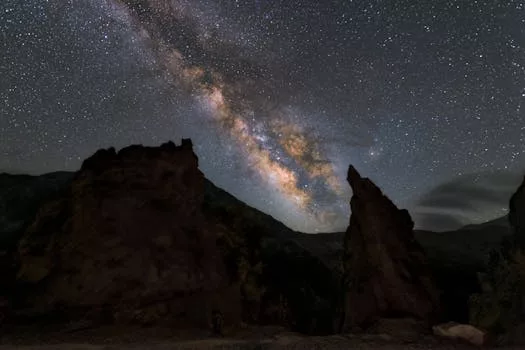
“
Beyond the Milky Way: Imagining New Worlds and Possibilities
Introduction to the Cosmos
Beyond the Milky Way: Imagining New Worlds and Possibilities is an exciting topic that has captivated human imagination for centuries. The vast expanse of space has always fascinated us, and the possibility of life beyond Earth has sparked intense curiosity and debate. As we continue to explore and understand the universe, we are constantly reminded of the infinite possibilities that lie beyond our galaxy, the Milky Way.
The Milky Way is a barred spiral galaxy, consisting of hundreds of billions of stars, stellar remnants, interstellar gas, dust, and dark matter, all bound together by gravity. It is estimated to be approximately 100,000 light-years in diameter and is thought to contain between 200 and 400 billion stars. The Milky Way is just one of the billions of galaxies in the observable universe, and each galaxy contains its own unique features and characteristics.
Exploring the Galaxy and Beyond
As we explore the Milky Way and beyond, we are constantly discovering new and exciting celestial bodies. From exoplanets and asteroids to black holes and neutron stars, each new discovery sheds light on the complexity and diversity of the universe. The search for life beyond Earth is an ongoing and intriguing topic, with scientists using a variety of methods to search for biosignatures and determine the habitability of distant planets. For more on this topic, see our post on the power of imagination beyond the stars.
One of the most significant discoveries in recent years is the detection of exoplanets, which are planets that orbit stars outside of the Milky Way galaxy. These planets come in a wide range of sizes and compositions, and some are believed to have conditions similar to those of Earth. The discovery of exoplanets has opened up new possibilities for the search for life beyond our galaxy and has raised questions about the potential for intelligent life to exist elsewhere in the universe.
Imagining New Worlds and Possibilities
As we continue to explore the universe, we are constantly imagining new worlds and possibilities. From the potential for life on Mars and the moons of Jupiter to the possibility of intelligent life on distant planets, the possibilities are endless. Scientists and science fiction writers have long been fascinated by the idea of parallel universes and alternate realities, and the concept of the multiverse has sparked intense debate and speculation. For insights on this topic, check out Galaxies of Dreams.
The search for life beyond Earth is not just about the discovery of new worlds; it is also about understanding the origins of life on our own planet. By studying the conditions and processes that led to the emergence of life on Earth, scientists hope to gain insights into the possibility of life existing elsewhere in the universe. The discovery of life beyond Earth would be a significant milestone in the history of human discovery and would raise fundamental questions about our place in the universe.
Takeaways
- The Milky Way is just one of the billions of galaxies in the observable universe, each with its own unique features and characteristics.
- The search for life beyond Earth is an ongoing and intriguing topic, with scientists using a variety of methods to search for biosignatures and determine the habitability of distant planets.
- The discovery of exoplanets has opened up new possibilities for the search for life beyond our galaxy and has raised questions about the potential for intelligent life to exist elsewhere in the universe.
- The search for life beyond Earth is not just about the discovery of new worlds; it is also about understanding the origins of life on our own planet.
- The possibility of life existing elsewhere in the universe raises fundamental questions about our place in the universe and the potential for intelligent life to exist elsewhere.




